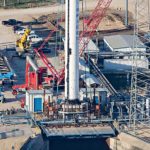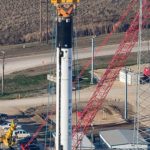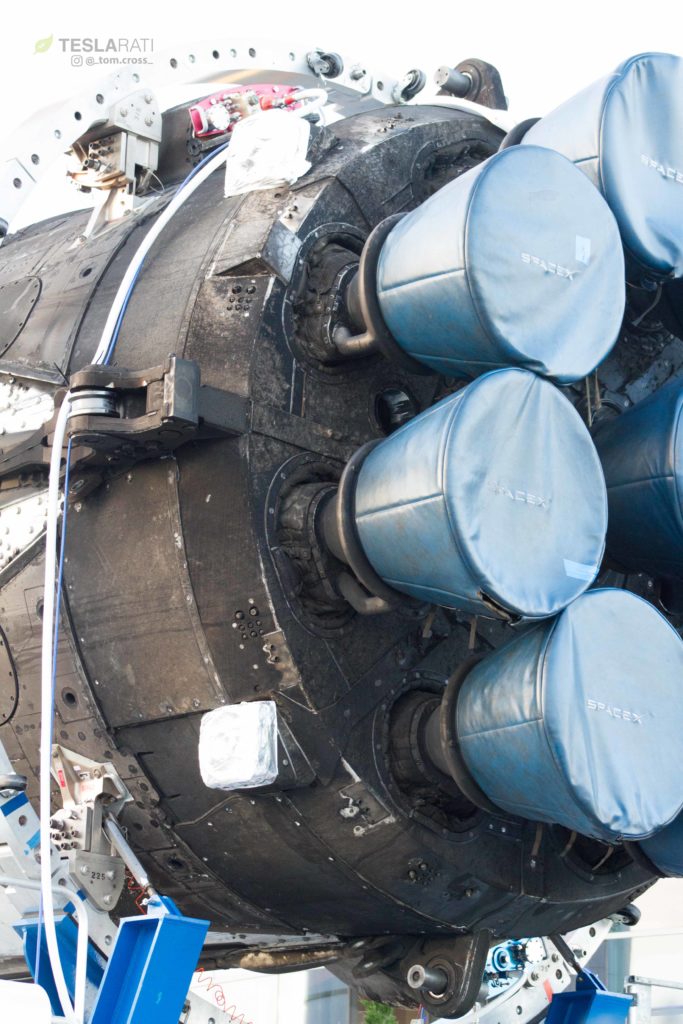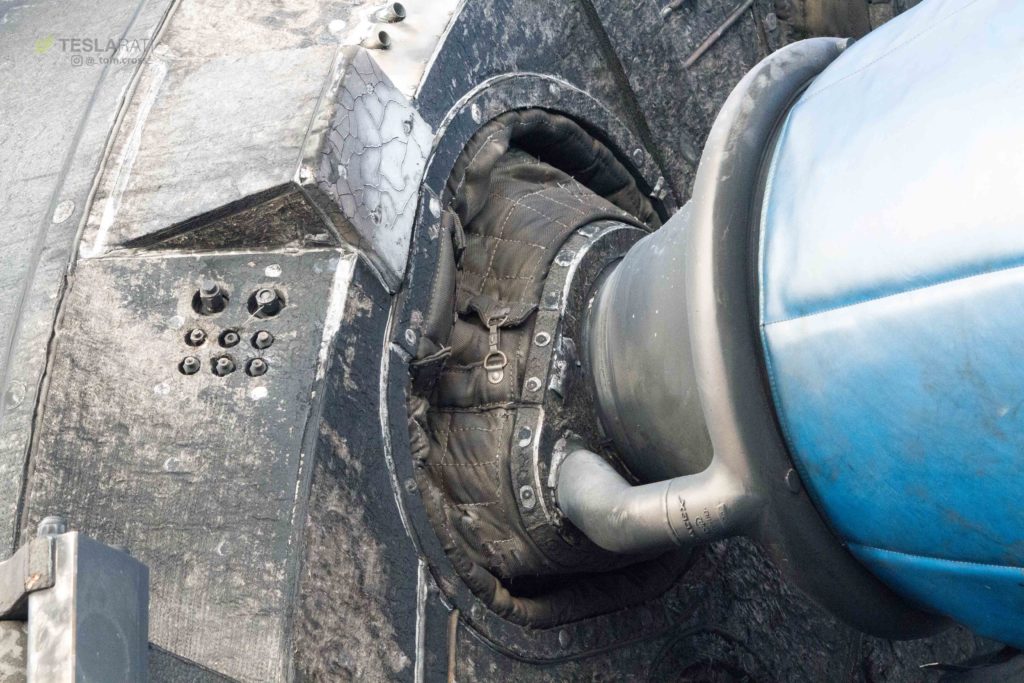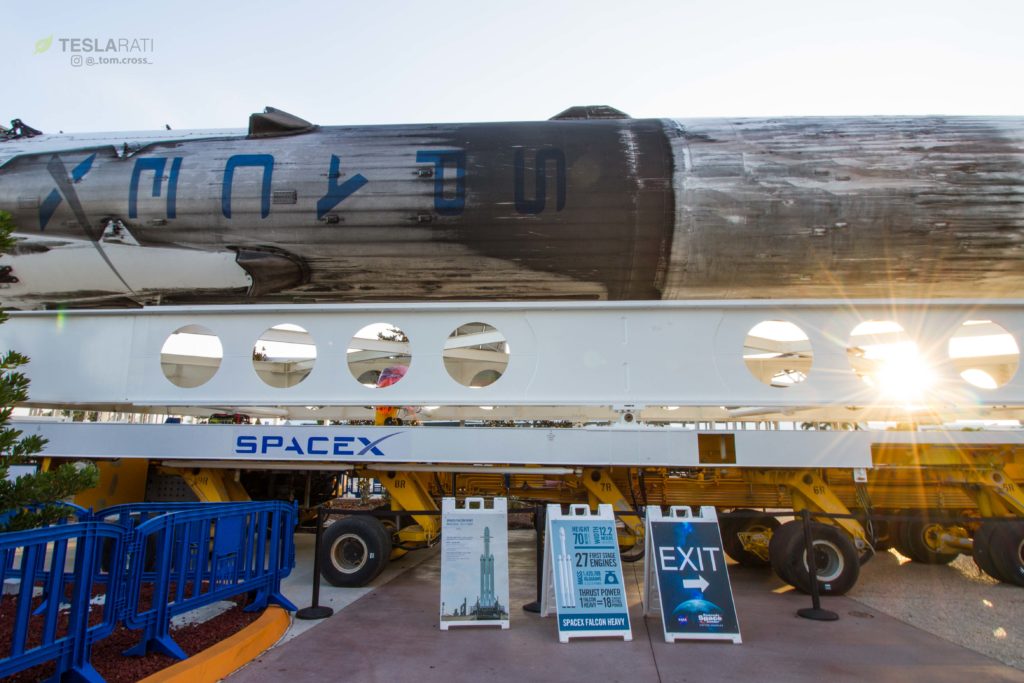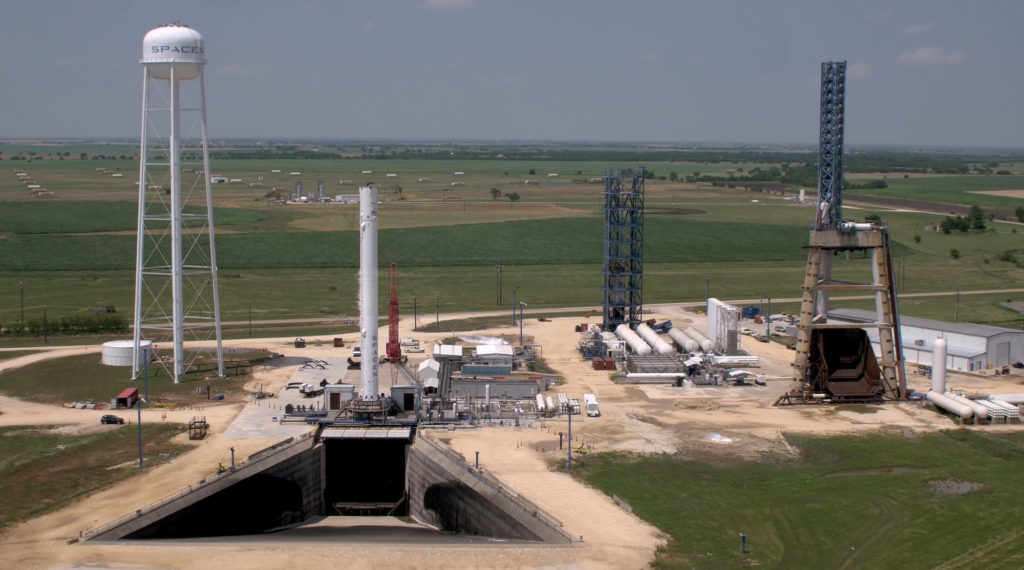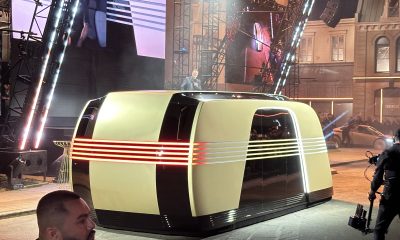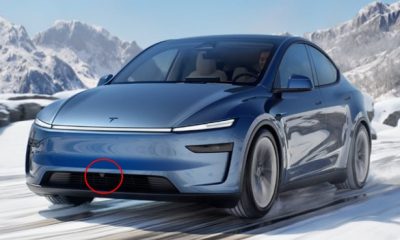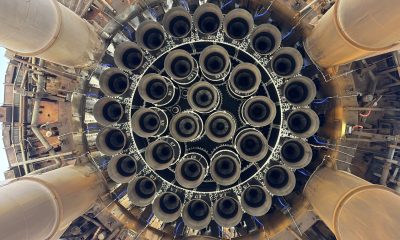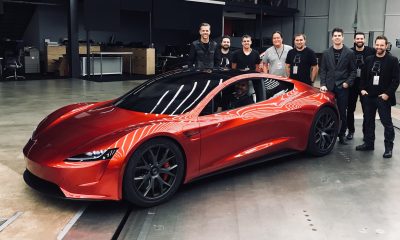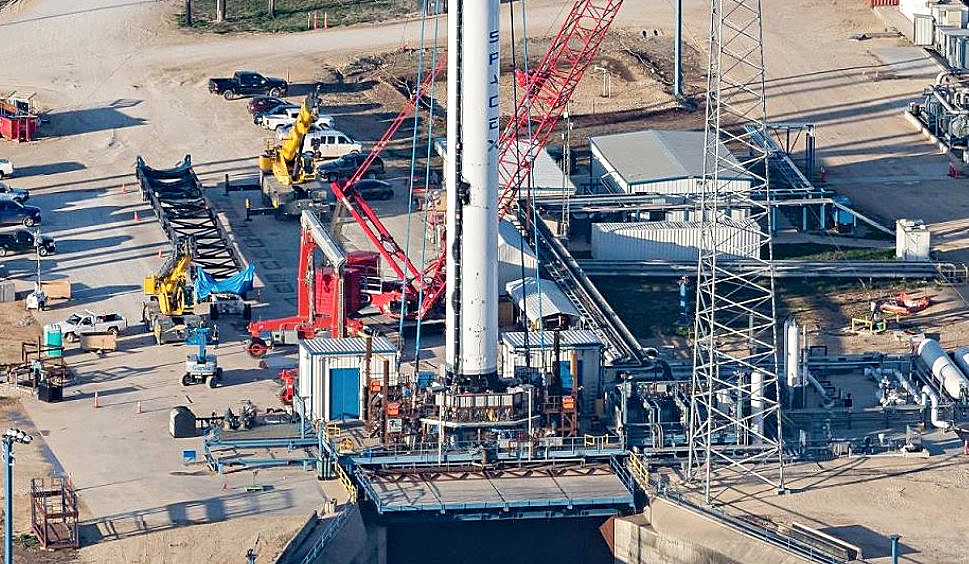
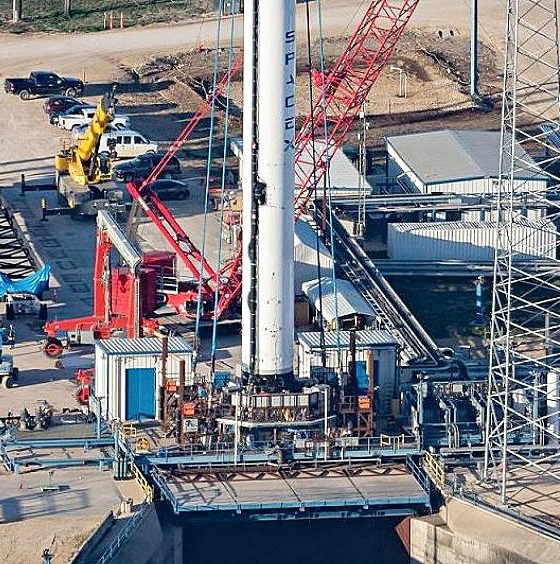
News
SpaceX Falcon 9 “Block 5” next-gen reusable rocket spied in Texas test site
SpaceX’s next and final generation of Falcon rockets is nearly ready to complete its biggest milestone yet, second only to operational launch. Known as Falcon 9 Block 5, the upgraded booster arrived at SpaceX’s McGregor, TX test facilities and went vertical on the static fire test stand.
Now vertical, that first integrated static fire is likely to occur within a handful of days at most. Once complete, assuming the data it produces do not betray any bugs or serious problems, the booster will be brought horizontal and transported to one of SpaceX’s three launch facilities for its first operational mission.
Why Block 5?
With nary a hint of hyperbole, it’s safe to say that Falcon 9 Block 5 will be the most significant piece of hardware ever developed and fielded by SpaceX. The reason lies in many of the changes and upgrades present in this newest iteration of the rocket. While Falcon 9 B5 and its similarly upgraded Merlin 1D engines include design changes intended to satisfy NASA requirements before SpaceX can be certified to launch humans, the brunt of the upgrades are laser-focused on ease and speed of reusability.
- SpaceX Block 5 Falcon9 at McGregor, Texas [Credit: Chris G – NSF via Twitter, Reprinted with permission from NASASpaceflight.com]
- SpaceX Block 5 Falcon9 at McGregor, Texas [Credit: Chris G – NSF via Twitter, Reprinted with permission from NASASpaceflight.com]
- SpaceX Block 5 Falcon9 at McGregor, Texas [Credit: Chris G – NSF via Twitter, Reprinted with permission from NASASpaceflight.com]
Photo courtesy of Chris G at nasaspaceflight.com via Twitter. Reprinted with permission.
The goal with those upgrades, as publicly stated by numerous SpaceX executives, is to enable as many as 10 flights with a bare minimum of refurbishment and 100 or more launches with intermittent maintenance. To achieve those titanic aspirations, SpaceX has gathered a flood of data and experience earned through the recovery of nearly 20 Falcon 9 and Heavy boosters, as well as the successful reflight and second recovery of several of those same boosters. With that data in hand, the company’s launch vehicle engineers optimized and upgraded the rocket’s design to combat the worst of the extreme forces each booster is subjected to while returning to land (or sea).
- Falcon Heavy side booster B1025 gives a sense of the sheer brutality of reentry conditions. (Tom Cross)
- Note the pieces of cork that have been torn off by the buffeting and heat on the lefthand side. (Tom Cross)
- An incredibly detail shot of the side of the octaweb. The large chunk of smooth metal in the center is actually one of the booster’s connection points to the Falcon Heavy center core. (Tom Cross/Teslarati)
- A beautiful capture of one of the booster’s nine Merlin engines, showing off the pipe used to cool the engine bell, as well as the ceramic blanket that protects its more sensitive plumbing. (Tom Cross/Teslarati)
As evidenced by photos taken by Gary Blair, one of NASASpaceflight.com‘s most renowned L2 forum contributors, many of the visible differences between Block 5 and previous versions of Falcon 9 are a result of drastically improved and expanded heat shielding of its most sensitive and crucial components. While Falcon 9 B5’s black sections by all appearances look like naked carbon fiber composite, they are likely to be coated with an incredibly heat-resistant material known a Pyron. Portions of the booster that suffer from incidental scorching and extreme heating (aside from the octaweb) appear to have been treated with this material, including a pathway down the side of the rocket known as a raceway. The raceway is a protective enclosure for a variety of cabling and piping, essentially the rocket’s nervous system as well as the home of several the cold gas thrusters it uses to orient itself outside of Earth’s atmosphere.
In the past, SpaceX has used high-quality cork as a quasi-ablative thermal protection system for those same components, including the payload fairing. A major downside of cork, however, is that it is very ablative and tends to come off rather haphazardly in large chunks, all of which must either be spot-fixed or replaced entirely before a booster reflight. By replacing that cork with Pyron or a similar internally-developed material, those sensitive Falcon components may be almost totally insulated from and resistant to temperatures as high as 2300 °F (1200 °C)
- Block 5 looks similar to this Falcon 9, but with a deep black interstage and a black enclosure instead of the white covering seen running down the left side of the booster. (SpaceX)
Titanium grid fins are another central feature of Block 5, acting as a near-indefinitely reusable replacement for the aluminum grid fins SpaceX has traditionally used. Put through a huge amount of heating during reentry; aluminum grid fins have famously appeared to partially melt during some of the hottest booster recovery attempts. Titanium, a metal with a much higher melting point, will have no such problems, does not need ablative white paint, and certainly appear all but untouched by reentry in the cases of both their June 2017 debut and second flight on Falcon Heavy’s side boosters.
Finally and perhaps most importantly, is the octaweb – the assembly at the base of Falcon 9 responsible for safely transmitting nearly two million pounds of thrust from its nine Merlin 1Ds to the rest of the rocket’s structure, while also taking the brunt of the heat of reentry. Before Block 5, the octaweb was protected from that heating with an ablative thermal protection system, likely around 80% cork and 20% PICA-X, the same material used on Cargo Dragon’s heat shield. Based on comments made privately by individuals familiar with SpaceX, that ablative shielding is to be replaced by a highly heat-resistant metal alloy known as inconel. By ridding Block 5 of ablative heat shielding, SpaceX will no longer have to carefully examine and replace those materials after each launch, removing one of the biggest refurbishment time-sinks.

Titanium grid fins complete the highly reusable changes to Block 5 of Falcon 9. (NASA)
Combined, these various upgrades are intended to enable Falcon 9’s first stage to be reused almost effortlessly compared to previous iterations. With this vehicle, including the reusable fairing debuted on the launch of PAZ, SpaceX may well be able to achieve Elon Musk’s famous goal of lowering the cost of launch by nearly an order of magnitude. While SpaceX will likely use that cost reduction to first recoup its considerable investments in reusability and Falcon Heavy, major price drops may reach customers soon after. This Falcon 9, in particular, is unlikely to launch for another month or so, but when it does, it is perhaps the biggest step SpaceX has yet taken on the path to routine, rapid, and affordable access to orbit.
Teslarati – Instagram – Twitter
Tom Cross – Twitter
Pauline Acalin – Twitter
Eric Ralph – Twitter
Elon Musk
Tesla says it is working on rides for the handicapped and disabled with Robotaxi
Tesla CEO Elon Musk confirmed that this was a focus by responding, “Absolutely,” to the embedded post on X above. Tesla said it is developing its own “wheelchair-accessible vehicle,” also known as a WAV.
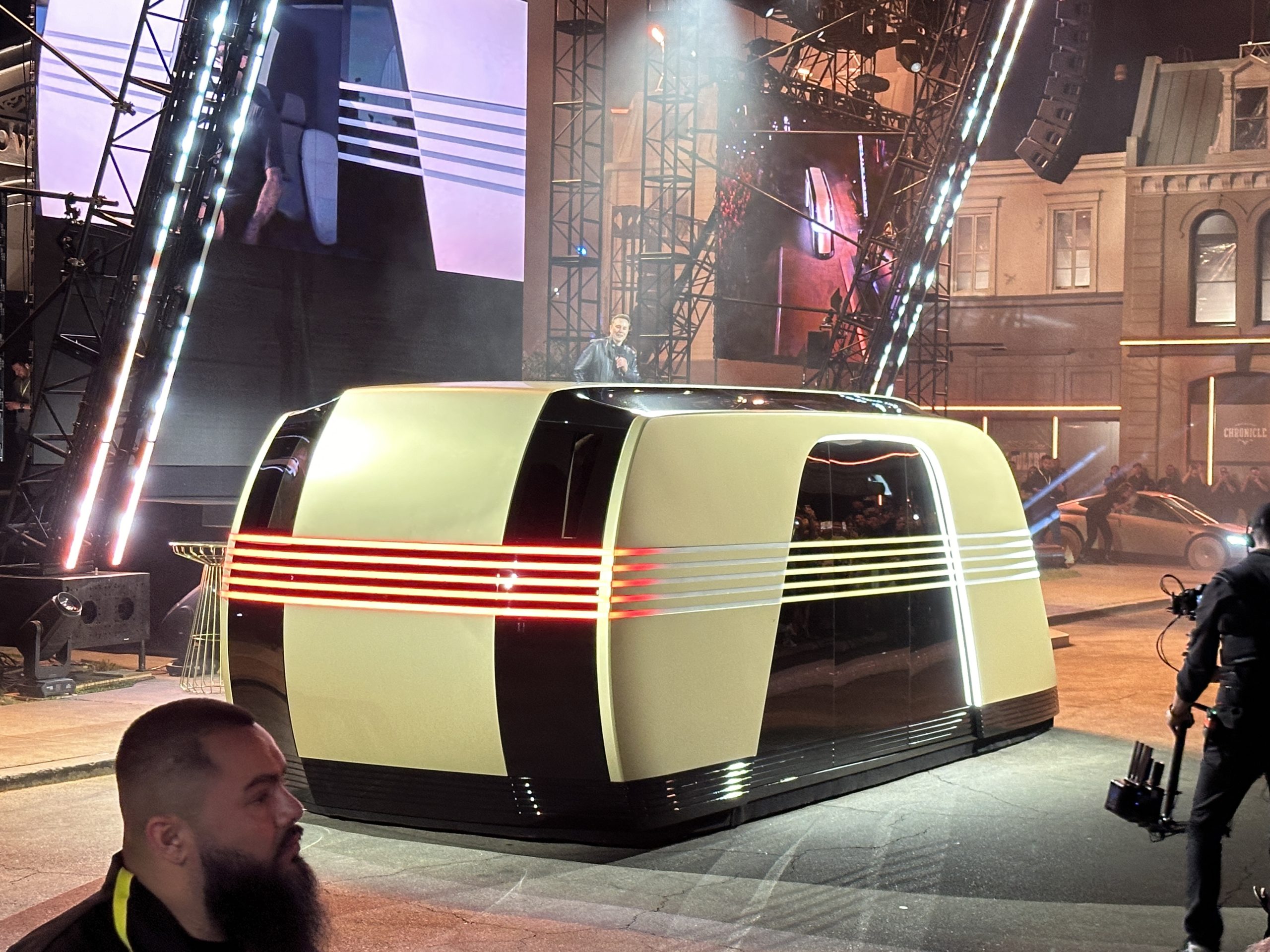
Tesla says on its Robotaxi app that it is working on enabling “accessibility rides” that would give the handicapped and disabled the ability to hail a Robotaxi to get to an appointment.
While Robotaxi will obviously revolutionize the way we travel for our work commutes, daily activities, and other things, but there is true potential to enable serious change for those who cannot drive.
Autonomous transportation would make life easier for those who are unable to obtain a driver’s license. Of course, with today’s ride-sharing platforms, things are much easier than they once were.
However, rides from Uber and Lyft, while plentiful, always have an opportunity to be unavailable in some regions, especially rural ones, due to a lack of drivers.
Robotaxi aims to solve this problem through autonomous transportation, a technology that Tesla has been developing for years.
However, new language in the Robotaxi app shows that Tesla is working on a solution for people who need rides for medical reasons, and it uses a picture of the Robovan to hammer this point home:
NEWS: Tesla Working on Accessibility Rides as Part of Robotaxi Expansion.
Tesla’s Robotaxi service in Austin is signaling a major step toward inclusivity with a new accessibility section in the mobile app. While the app directs users to two alternative services, CapMetro Access… pic.twitter.com/rOblFUA40F
— Sawyer Merritt (@SawyerMerritt) September 19, 2025
Tesla CEO Elon Musk confirmed that this was a focus by responding, “Absolutely,” to the embedded post on X above. Tesla said it is developing its own “wheelchair-accessible vehicle,” also known as a WAV.
This is likely the Robovan, which was unveiled on October 10 at the Robotaxi event last year:
It is pretty interesting to see two Musk ventures working on solutions for those who are physically impaired or have other disabilities. With Tesla, Robotaxi will unlock immense potential for those who are unable to drive themselves, addressing a genuine need in today’s world.
Additionally, Neuralink is continuing its development of technology to fight against various physical and mental disabilities. A great question to ask is, “Which will be more beneficial for humans?”
Cybertruck
Tesla gives big hint that it will build Cyber SUV, smaller Cybertruck
“Those are definitely things we’ve considered. Wait & see is probably the best way I can answer that. We’re working on so many innovative & fun things.”
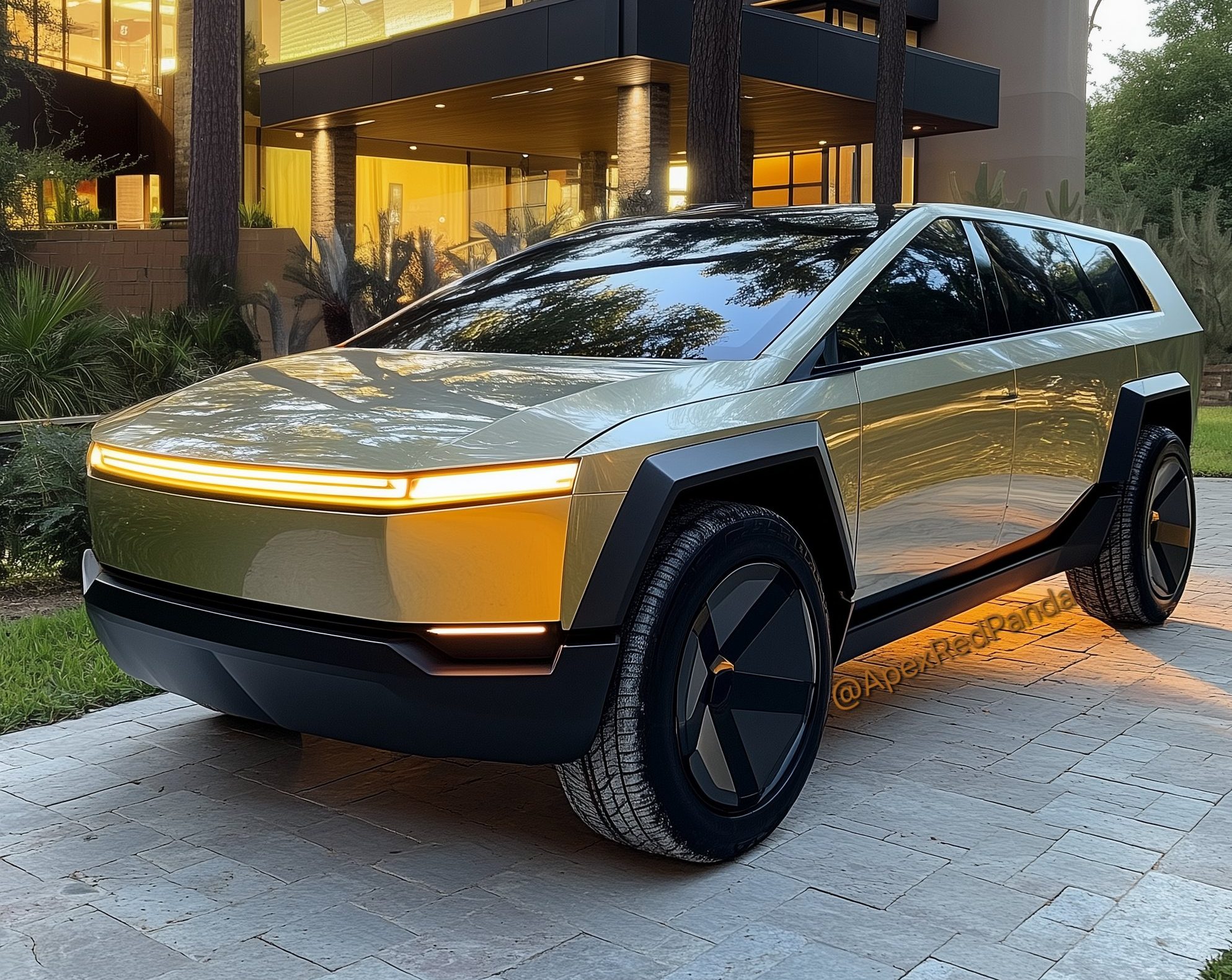
Tesla appears to have given a significant hint that it plans to build two highly anticipated and requested vehicles: the Cyber SUV and a smaller Cybertruck. This potentially indicates that two new cars could be added to the lineup soon.
For some time, Tesla fans have been requesting two things: a true SUV and a more compact Cybertruck. The SUV has been on the minds of fans and owners for some time, as Tesla does not currently build a full-size SUV that competes with vehicles like the Chevrolet Tahoe or Ford Expedition.
Tesla’s longer Model Y did not scale back requests for this vehicle type from fans
Meanwhile, the compact and smaller Cybertruck has been teased for years, especially since the all-electric pickup seems to be a viable option for international markets; however, its size does not seem ideal for the tight roadways in other regions.
Lately, there have been more hints than ever that Tesla is finally considering these two vehicles. It’s all but confirmed, but Tesla has always left breadcrumbs for fans to find and speculate over.
In an interview with Bloomberg, Tesla Chief Designer Franz von Holzhausen said that the company has considered these two vehicles for its lineup, but he would not give a definitive “yes” or “no” regarding their development:
“Those are definitely things we’ve considered. Wait & see is probably the best way I can answer that. We’re working on so many innovative & fun things.”
Recently, the speculation regarding the Cyber SUV has been well-fueled, as a recent promotional video Tesla released seemed to show a mock-up design hiding in plain sight:
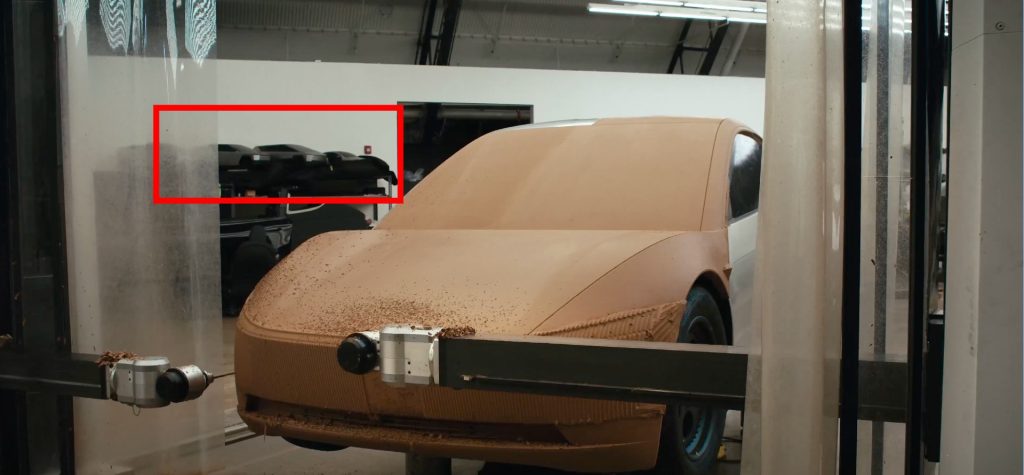
Credit: Tesla
Interestingly, Tesla said in a regulatory filing early this year that it would not adopt the Cybertruck’s stainless steel exoskeleton for new vehicles. However, it could still launch a design inspired by the Cybertruck, but using different materials.
Very, very interesting observation here.
Tesla said in its Q4 Shareholder Deck that it would not utilize the Stainless Steel Exoskeleton in future vehicles.
Fans have been calling for a full-size SUV in the Tesla lineup.
It would probably do very well. Cost has to be right. https://t.co/VryCVQxEC9 pic.twitter.com/APxeYmF6ew
— TESLARATI (@Teslarati) September 1, 2025
As far as the more compact Cybertruck design, this would enable fans in Europe and Asia to purchase the all-electric pickup.
There have been concerns from a regulatory perspective in some countries outside of North America, as the sheer size and sharp edges have caused some concern for other governments:
Tesla Cybertruck gets pushback in Europe, increasing need for ‘international’ version
However, back in 2019, just after the Cybertruck’s unveiling, CEO Elon Musk admitted that there was a place for a smaller version.
News
Tesla Robotaxi is headed to a new U.S. state following latest approval
“Only a trained employee, contractor, or other person authorized by the company can operate or monitor the vehicles.”

Tesla Robotaxi is headed to a new U.S. state following its latest approval, which was revealed on Friday night.
Tesla has been operating its Robotaxi platform in Texas and California, with Austin being the first city where the company could test a ride-hailing platform without anyone in the driver’s seat.
First launching in Austin in late June, Tesla’s focus has been expanding its service area, its fleet of Robotaxi vehicles, and its rider population, which has grown most recently due to its public launch.
However, Tesla is also filing applications in states where these autonomous driving programs can operate, aiming to expand to all 50 states eventually. CEO Elon Musk said earlier this year that the company should be able to offer Robotaxi rides to roughly half of the U.S. population.
Alongside Texas and California, Tesla recently gained permission to test its Robotaxi in Nevada, marking the third state where it had some form of regulatory permission to perform rides using an unreleased version of the Full Self-Driving suite.
Tesla adjusts one key detail of Robotaxi operations in Austin
Now, Tesla has gained another approval in a new state, its fourth, marking a significant step in its expansion across the U.S.
In Arizona, Tesla gained regulatory approval to begin testing autonomous vehicles on public roads.
BREAKING: Tesla has officially received approval from the Arizona Department of Transportation to start testing autonomous vehicles on public roads.
Today, I confirmed directly with the Arizona DOT that @Tesla has met requirements to begin testing its autonomous vehicles in… pic.twitter.com/kjgFnKEcJF
— Sawyer Merritt (@SawyerMerritt) September 20, 2025
The vehicles in Austin and the Bay Area of California both use what Tesla has been referring to as “Safety Monitors” in the cars. During city operation in Texas, the Safety Monitor sits in the passenger’s seat. When the route takes the car on the highway, the Safety Monitor jumps into the driver’s seat.
Tesla explains why Robotaxis now have safety monitors in the driver’s seat
In California, the Safety Monitor is always in the driver’s seat.
In Arizona, Tesla will also utilize what a communication said was “Safety Drivers,” insinuating that the monitor would be in the driver’s seat. However, another line in the email states:
“Only a trained employee, contractor, or other person authorized by the company can operate or monitor the vehicles.”
It sounds as if there is the potential for the Safety Monitor to be in either seat, much like Tesla’s process in Austin. However, this is currently unconfirmed.
The new approval marks a drastic step forward for Tesla as it has received two new approvals in just two weeks. Regulatory hurdles seem to still be the biggest bottleneck for Tesla in terms of gaining permissions to operate in new states, but things seem to be moving along pretty well so far.
-
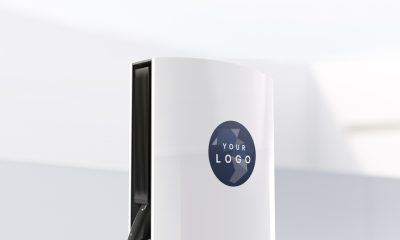
 News2 weeks ago
News2 weeks agoTesla launches new Supercharger program that business owners will love
-
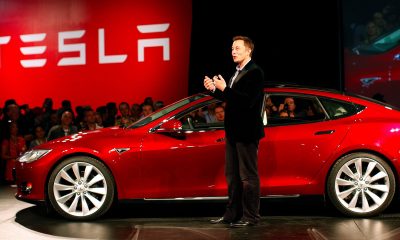
 Elon Musk2 weeks ago
Elon Musk2 weeks agoTesla Board takes firm stance on Elon Musk’s political involvement in pay package proxy
-
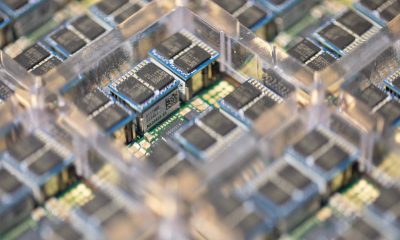
 Elon Musk2 weeks ago
Elon Musk2 weeks agoElon Musk is setting high expectations for Tesla AI5 and AI6 chips
-
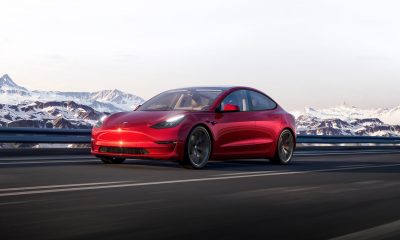
 News1 week ago
News1 week agoTesla is improving this critical feature in older vehicles
-
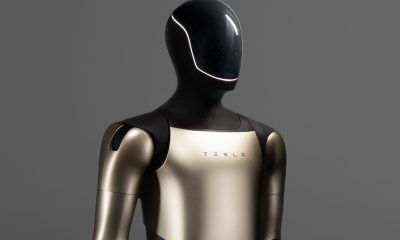
 Elon Musk2 weeks ago
Elon Musk2 weeks agoElon Musk confirms Tesla has never shown Optimus V3 design yet
-

 News2 weeks ago
News2 weeks agoTesla launches MultiPass to simplify charging at non-Tesla stations
-
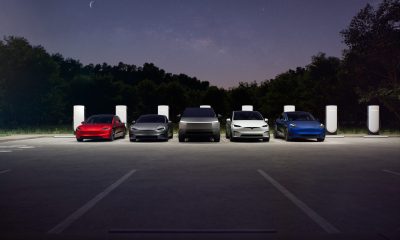
 News2 weeks ago
News2 weeks agoTesla is bailing out Canadian automakers once again: here’s how
-
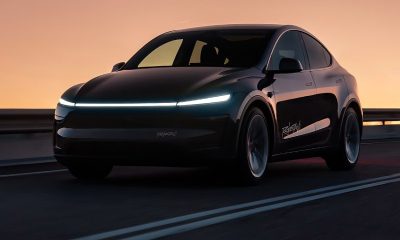
 News1 week ago
News1 week agoTesla lands regulatory green light for Robotaxi testing in new state


